Introduction to Clear Aligners for Teens
Clear aligners have revolutionized orthodontic treatment for teenagers by offering a discreet, comfortable, and effective alternative to traditional braces. Designed from advanced, transparent plastic materials and customized for each patient, clear aligners gradually guide teeth into proper alignment while fitting seamlessly into active teen lifestyles. This article explores how clear aligners work, their distinct benefits, treatment expectations, and considerations specific to adolescent patients, empowering parents and teens to make informed decisions about their orthodontic care.
How Clear Aligners Work and Their Effectiveness for Teens
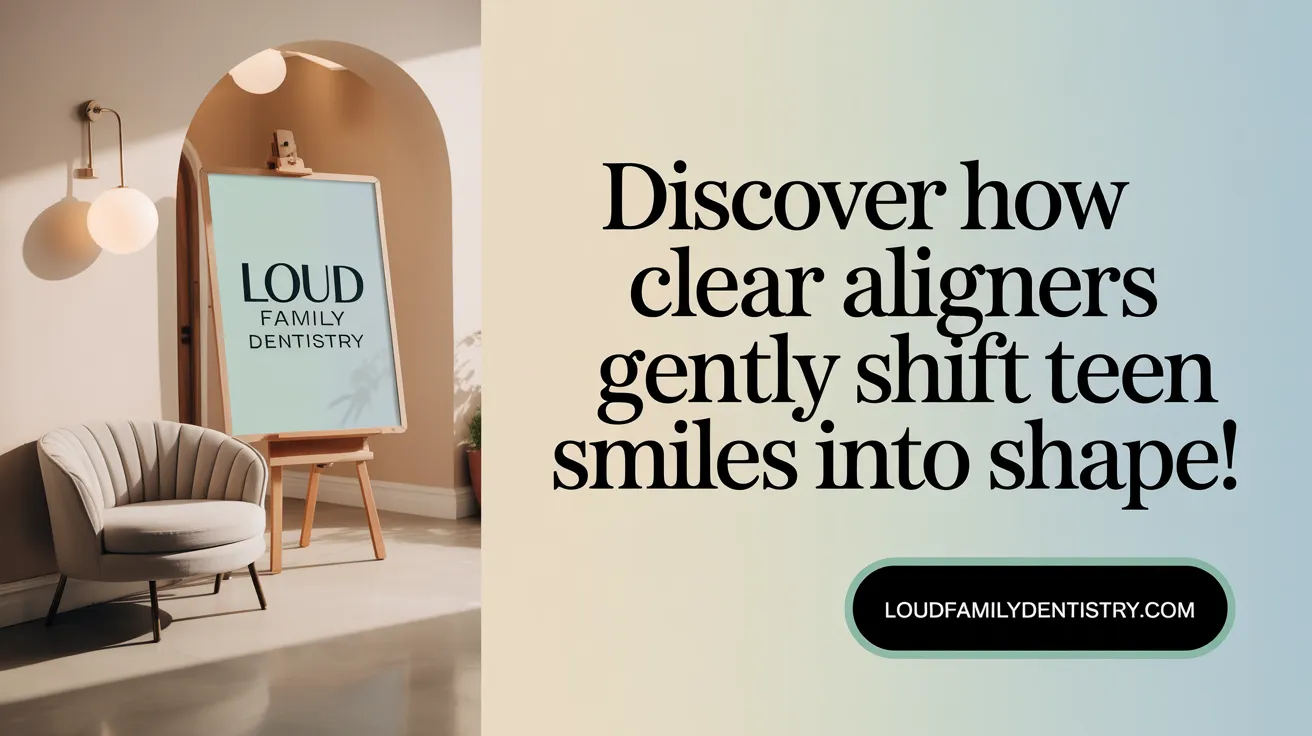
What are clear aligners and how do they work for teens?
Clear aligners are nearly invisible, removable plastic trays that gradually shift teeth into the desired position. They work through a series of custom-made trays, each designed to move specific teeth or sections incrementally. Teens wear each aligner for about one to two weeks, removing them only for eating, drinking (except water), and oral hygiene. As they switch from one tray to the next, the teeth gently and gradually move into better alignment.
Treatment duration and process
The typical treatment with clear aligners lasts between 9 to 16 months, depending on the severity of the dental issues and patient compliance. The process begins with a consultation where digital scans or impressions of the teeth are taken for precise customization. Orthodontists or dental professionals then craft a tailored treatment plan, mapping out the movement of teeth over time. During treatment, teens are expected to wear the aligners for about 20-22 hours daily to achieve optimal results.
Customization and technology involved
Modern technology, including 3D digital imaging and advanced software, plays a critical role in designing each set of aligners. This technology ensures that each tray fits snugly over the teeth and moves them gradually in small, controlled steps. Features like blue compliance indicators fade over time, providing visual cues to monitor wear time. Some systems also include attachments—small, tooth-colored bumps that help direct and enhance tooth movement.
Suitability for mild to moderate dental issues
Clear aligners are most effective for treating mild to moderate orthodontic problems, such as crowding, gaps, overbite, and underbite. They are less predictable for severe malocclusions or cases requiring complicated rotations or significant jaw corrections. In such cases, traditional braces or other orthodontic treatments might be recommended.
Importance of compliance and regular monitoring
Success with aligners heavily relies on consistent wear. Teens should wear the aligners for at least 20 hours each day and remove them only for eating, drinking (except water), and cleaning. Regular monitoring appointments, typically every 6 to 8 weeks, are essential to track progress and make adjustments if needed. Proper hygiene also involves cleaning the aligners daily and avoiding hot water or direct sunlight to prevent warping.
This combination of advanced technology, personalized treatment planning, and patient commitment makes clear aligners an effective and discreet option for teen orthodontic needs, often delivering satisfying results within a year or so.
Benefits of Clear Aligners for Teenagers
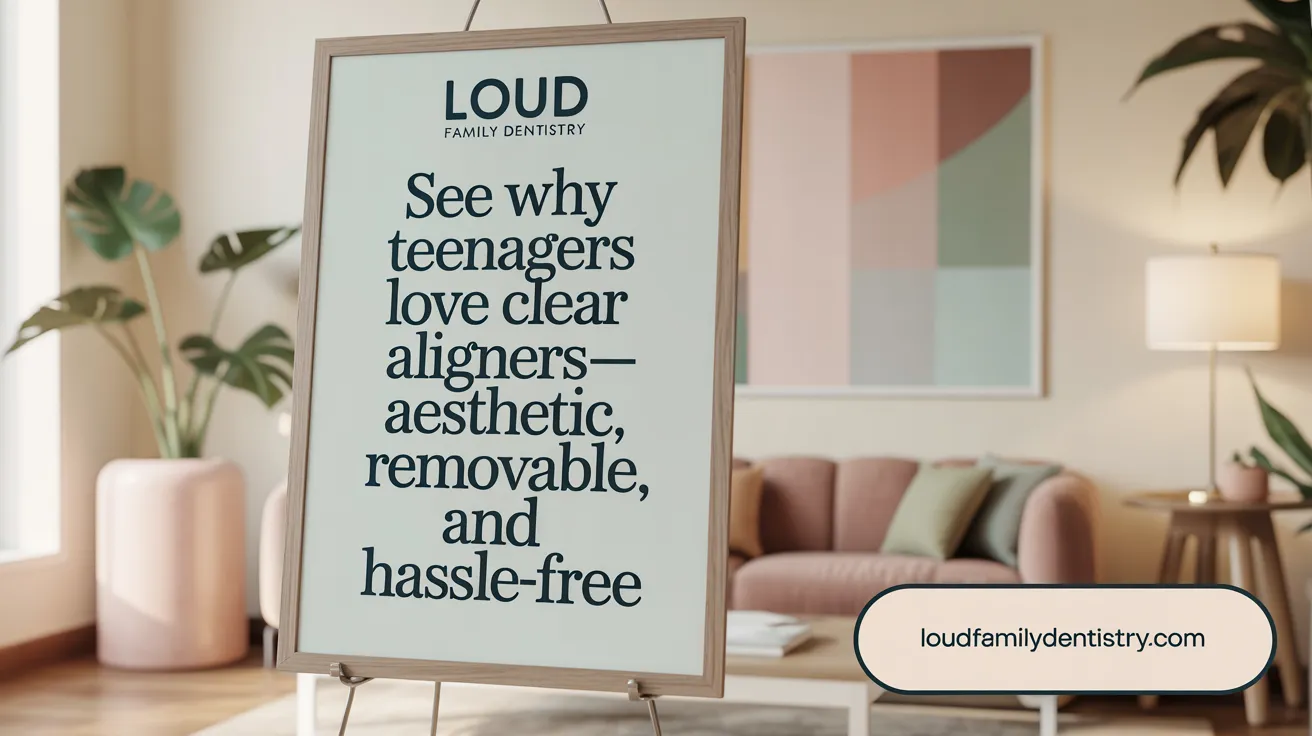
What benefits do clear aligners offer to teenagers compared to other orthodontic options?
Clear aligners, such as Invisalign, provide several advantages for teens seeking dental correction. One of the biggest benefits is their discreet appearance. Made from transparent, medical-grade plastic, these aligners are nearly invisible when worn, helping teenagers maintain their confidence and social comfort during treatment.
Comfort is another key advantage. Unlike traditional braces that use brackets and wires, clear aligners have smooth, rounded edges that minimize irritation to cheeks and gums. This enhanced comfort is detailed in resources about the comfort of clear aligners and can make the orthodontic experience more pleasant.
A significant benefit of aligners is their removability. Teens can take them out for eating, brushing, and flossing, which simplifies maintaining good oral hygiene. This also means there are no dietary restrictions often associated with braces, like avoiding sticky or hard foods that could damage the hardware, as explained in diet flexibility with aligners.
The convenience of fewer orthodontist visits is appealing to busy teenagers and their families. Many aligner systems allow remote monitoring, reducing the need for frequent office appointments. Treatment duration is also adjustable, with many cases completing in about a year, depending on the severity of misalignment, as discussed in clear aligner treatment duration.
Furthermore, aligners are well-suited for active lifestyles, easily removable for sports or musical activities, and can accommodate a variety of orthodontic needs, from mild crowding to gaps. More on this is covered under aligners for active lifestyles.
However, it’s important to note that the success of clear aligner treatment depends on responsible wear—most aligners need to be worn 20-22 hours a day—and proper oral care. Not all orthodontic issues are suitable for aligners, especially complex cases involving significant rotations or large gaps, as outlined in limitations of clear aligners.
In summary, clear aligners combine aesthetic appeal, comfort, convenience, and health benefits, making them a popular choice for many teenagers aiming for a healthier, more confident smile.
Comparing Clear Aligners and Traditional Braces for Teens
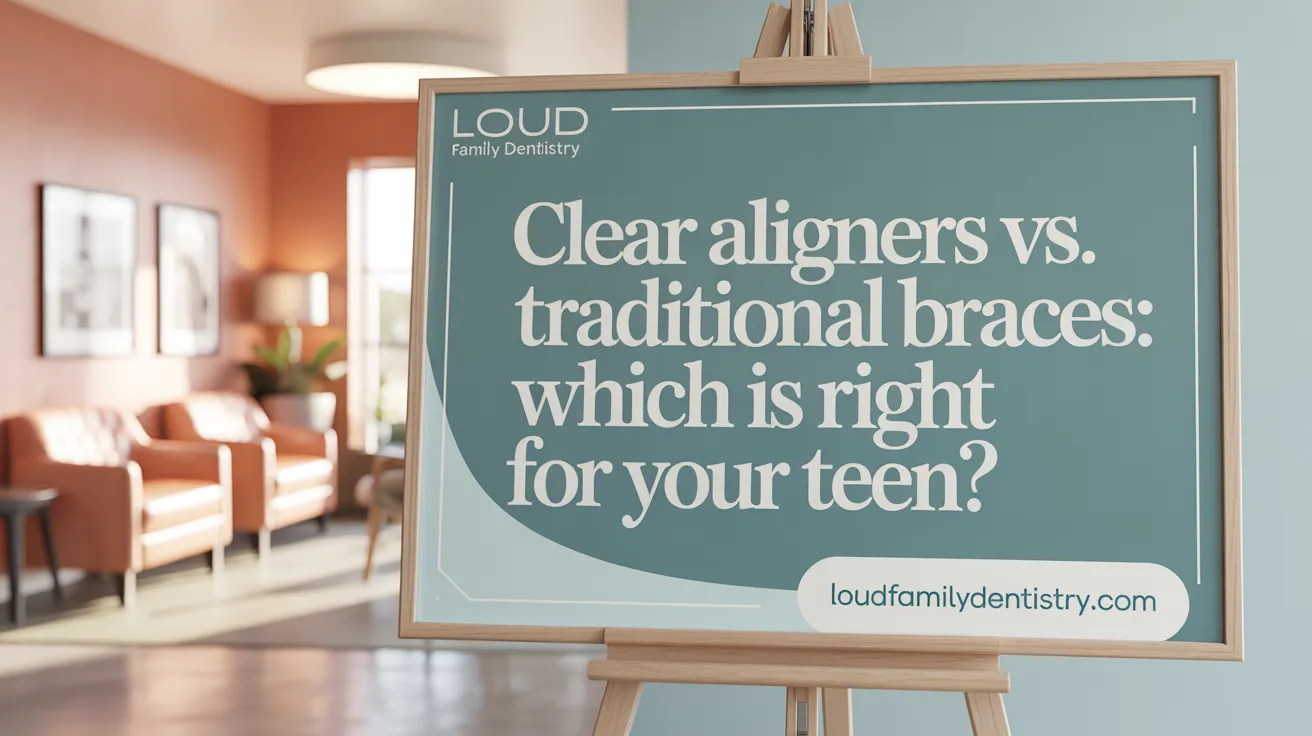
How do clear aligners compare to traditional braces in terms of effectiveness and suitability for teens?
Both clear aligners and traditional braces are proven effective for correcting various orthodontic issues, but their appropriate use depends on the specific dental needs of each teen.
Clear aligners, such as Invisalign clear aligners, are best suited for mild to moderate cases like crooked teeth, gaps, or minor bite concerns. They use a series of custom-made, transparent plastic trays that gradually realign the teeth. Their discreet nature and removability make them particularly appealing to teens concerned about aesthetics and social confidence (Clear Aligners for Teens and Adults).
Traditional braces, including metal and ceramic options, are often more appropriate for complex or severe dental corrections. They use brackets and wires fixed onto the teeth, which makes them highly effective for comprehensive orthodontic issues such as significant crowding, large gaps, or complex bite problems (Types of Braces for Teens).
When considering treatment suitability, braces tend to be more forgiving of patient compliance since they are fixed appliances, whereas aligners require consistent wear—about 20-22 hours daily—and responsible usage for optimal results (Wearing Clear Aligners Guidelines).
Cost is another factor; traditional braces generally are more affordable and have a broader range of options to suit different budgets. Additionally, braces can incorporate additional devices like elastics or headgear when needed, offering greater versatility (Braces for Teens).
In conclusion, while clear aligners are a convenient, less visible choice for many teens, traditional braces are often more effective for complex cases. A detailed consultation with an orthodontist will help determine the best treatment plan based on the teen’s dental health, lifestyle, and personal preferences (Clear Aligner Consultation Process).
| Aspect | Clear Aligners | Traditional Braces | Details |
|---|---|---|---|
| Effectiveness | Best for mild to moderate issues | Suitable for complex cases | Depends on severity of dental problems (Clear Aligners vs Traditional Braces) |
| Removability | Yes | No | Aligners can be taken out during meals and cleaning (Removable Clear Aligners) |
| Aesthetic appeal | Nearly invisible | Visible, especially metal options | Important for self-esteem and confidence (Benefits of Clear Aligners for Teens) |
| Compliance needed | High responsibility | Not dependent on patient compliance | Fixed braces work continuously; aligners require discipline (Wearing Clear Aligners Guidelines) |
| Cost | Typically higher | Usually less expensive | Varies by case and region (Cost of Traditional Metal Braces vs Clear Aligners) |
| Treatment duration | Usually 12-18 months | 12-36 months | Depends on case complexity (Invisalign Treatment Duration) |
Consultation with an orthodontist ensures the tailored approach, matching teen's dental needs and lifestyle for optimal outcomes (American Association of Orthodontists Recommendations).
The Clear Aligner Treatment Journey for Teens
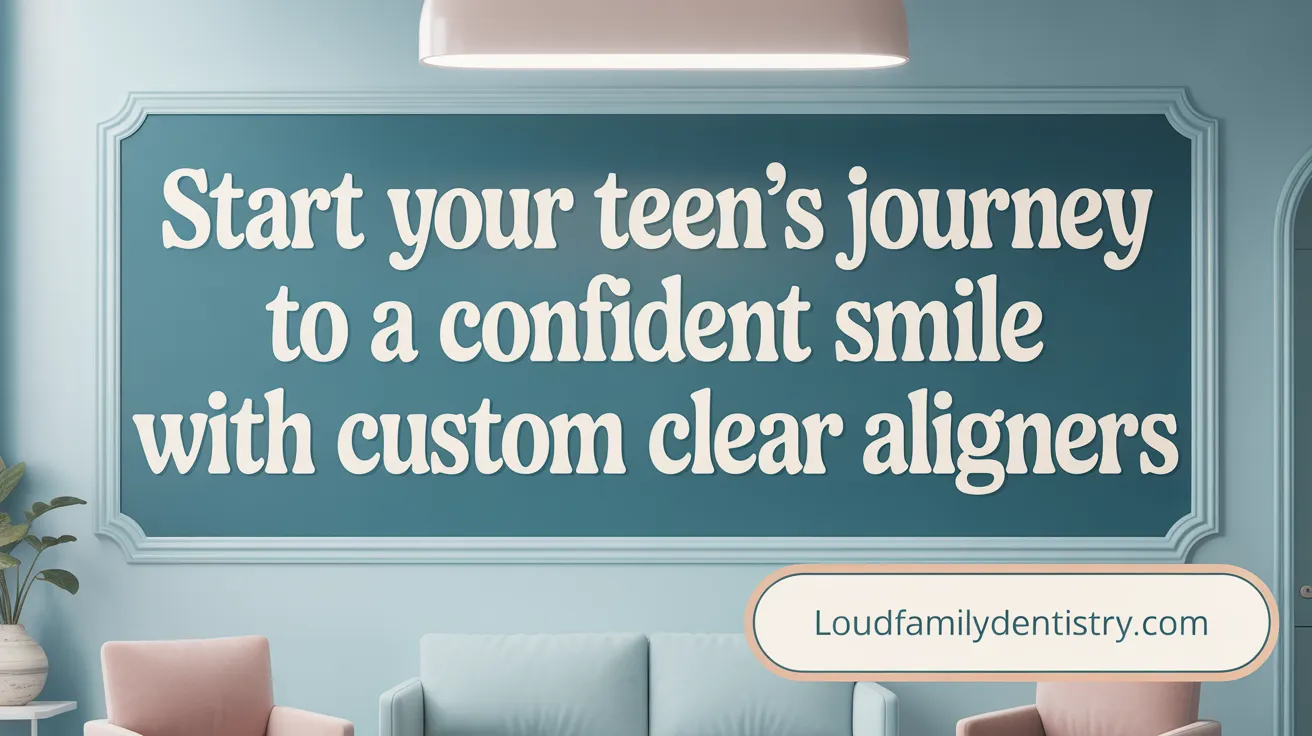
Initial consultation and diagnostic steps
The journey begins with a thorough initial consultation. During this appointment, the orthodontist will perform digital scans and intraoral scans or impressions of the teen’s teeth. Advanced imaging technology helps create a detailed map of the current dental structure and plans the precise movements needed to straighten teeth. This diagnostic phase is essential for designing a customized treatment plan that fits the individual’s needs (Clear aligner consultation process, Custom-made clear aligners).
Custom treatment planning with 3D imaging
Using 3D imaging and digital scans, the orthodontist develops a personalized treatment plan. This plan includes a series of virtual simulations showing how teeth will move at each stage. The plan also determines the number of aligners required, the duration of treatment, and the specific tooth movements. This approach ensures a predictable and tailored path toward a healthier, straighter smile (3D imaging treatment plan, Personalized treatment with clear aligners, Digital treatment plans for remote monitoring).
Daily wear and maintenance routines
Teens are instructed to wear their aligners for about 20 to 22 hours each day. The only times the aligners should be removed are during eating, drinking anything other than water, and brushing or flossing. Proper maintenance involves rinsing the aligners with lukewarm water and brushing them gently with a soft toothbrush. Keeping aligners clean and stored in a case avoids staining and damage (Wearing aligners instructions, Cleaning aligners with soft toothbrush, Aligner cleaning tips).
Common sensations and adjustments during treatment
When switching to a new set of aligners, teens may experience mild pressure or a sensation of tightness. These feelings typically last a few days and indicate that the teeth are responding to the treatment. Some teens might notice a slight change in speech, such as a temporary lisp, which usually resolves quickly. Any discomfort is normal and can be managed with over-the-counter pain relief if needed (Initial discomfort with aligners, Temporary lisp during treatment, Pain and Pressure of Clear Aligners).
Timeline and regular orthodontic check-ups
The overall treatment usually lasts between 12 to 18 months, depending on the complexity of the case. Patients have check-ups every six to eight weeks, where the orthodontist monitors progress, provides new aligners, and makes adjustments if necessary. These appointments help ensure the teeth are moving as planned and address any issues such as aligners fitting poorly or attachments coming loose (Invisalign appointments every six weeks, Regular orthodontic check-ups).
Post-treatment retainer use and care
Once the desired results are achieved, teens will typically receive a final set of retainers to maintain their new smile. Retainers are crucial for preventing teeth from shifting back. Usually, retainers are worn at night for several months or longer as advised by the orthodontist. Proper cleaning, regular dental checkups, and consistent retainer use are vital for long-term success (Retainers after clear aligner treatment, Night retainers after Invisalign).
Invisalign Teen: Features, Compliance, and Considerations
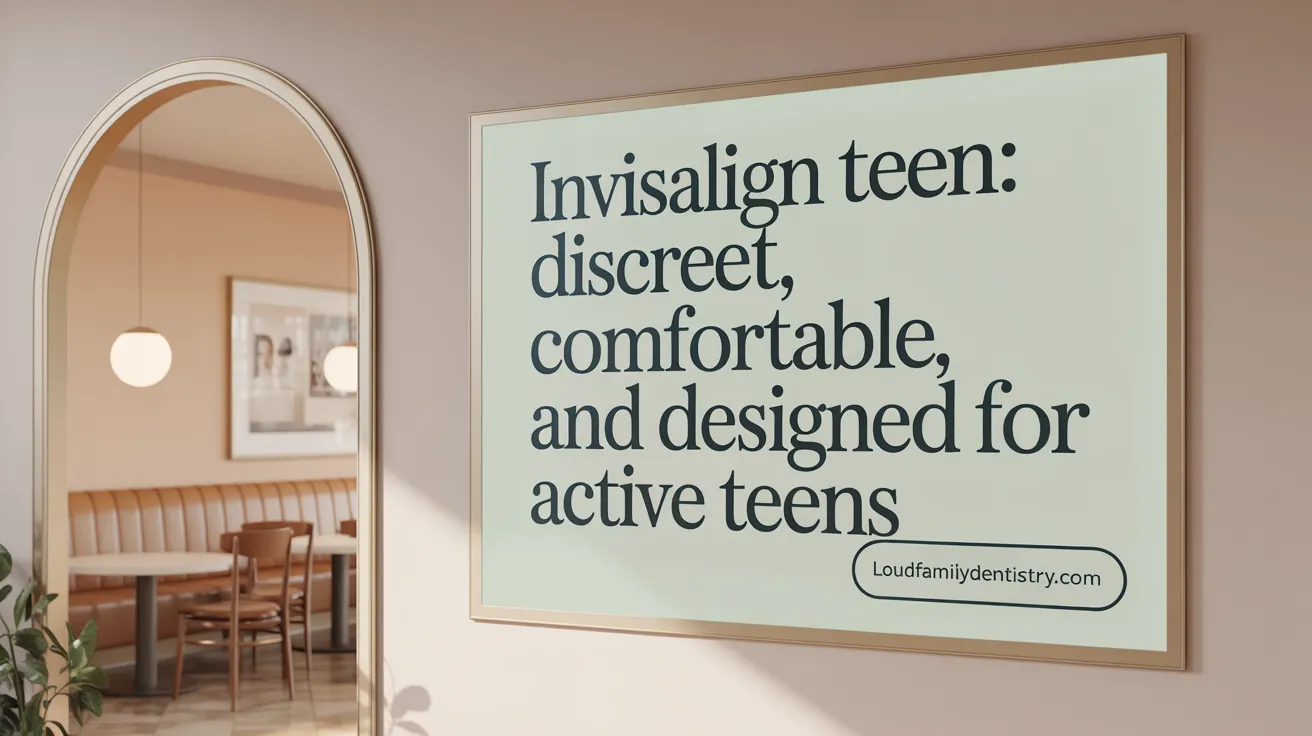
What are the specific features and benefits of Invisalign aligners designed for teenagers?
Invisalign Teen aligners are tailored to meet the unique orthodontic needs of adolescents. One of their standout features is the inclusion of blue compliance indicators that fade over time, helping parents and orthodontists monitor whether teens are wearing the aligners as prescribed. These aligners are made from smooth, virtually invisible plastic, which allows teens to smile confidently without the self-consciousness that traditional braces often cause.
They are fully removable, making it easy for teens to eat their favorite foods and to maintain good oral hygiene practices like brushing and flossing without difficulty. Special eruption tabs are incorporated into the design to accommodate developing teeth, preventing crowding or misalignment as the jaw and teeth grow. Advanced 3D imaging technology personalizes each set to ensure a precise fit, leading to more efficient treatment.
Furthermore, Invisalign Teen offers the convenience of fewer visits to the orthodontist—typically every 6-8 weeks—and the option to replace lost or damaged aligners at no additional cost. Overall, these features combine to provide a discreet, comfortable, and effective treatment solution that fits seamlessly into a busy adolescent's lifestyle. For more details, see Invisalign Teen treatment benefits.
How important is compliance and what are post-treatment expectations for teens using clear aligners?
Compliance plays a crucial role in the success and efficiency of Invisalign Teen treatment. For optimal results, teens are advised to wear their aligners for at least 20-22 hours each day, removing them only for eating, drinking (except water), brushing, and flossing. Because the aligners are removable, teens with inconsistent wear can experience delays, less predictable results, or the need for additional treatment time.
Strategies to improve adherence include setting daily reminders, involving teens in their treatment planning, and using compliance indicators like the blue fading dots. Regular follow-up visits allow the orthodontist to monitor progress, replace lost aligners, and provide encouragement. Guidance on wearing clear aligners can improve compliance.
Post-treatment, most teens are required to wear retainers to maintain their new smile. These are typically worn at night for several months or longer to prevent teeth from shifting back. Consistent use of retainers and regular dental visits help ensure that the results last and that teeth stay aligned for the long term. Learn more about post-treatment retainer use.
What factors determine the cost of teen clear aligner treatments and what financing options or discounts may be available?
The cost of Invisalign Teen treatment generally ranges between $3,000 and $7,000, largely depending on case complexity, duration, and geographic location. More straightforward cases may cost less, while complex malocclusions requiring longer treatment time or additional features can push the cost higher.
Dental insurance may cover up to about $3,000 or a portion of the treatment fee. Flexible spending accounts (FSA) or health savings accounts (HSA) can also be used to help offset costs, providing tax-free benefits. Many orthodontic providers offer financing plans that allow patients to pay over time with interest-free or low-interest options through third-party lenders like CareCredit. For an overview of payment and coverage options, see Invisalign financing options.
Occasional discounts or promotional offers might be available through certain clinics, especially those affiliated with universities or dental schools. Exploring these options can make treatment more affordable and accessible.
When should teens consider orthodontic evaluation and what is the recommended timing for starting clear aligner treatment?
The American Association of Orthodontists recommends that children see an orthodontist by age 7 to identify potential concerns early. Early evaluations enable orthodontists to detect issues like crowding, bite problems, or jaw discrepancies before they worsen.
Optimal timing for starting clear aligner treatment for most teens is generally after most permanent teeth have erupted—around ages 12 to 16—when the jaw is still growing, making it easier to guide teeth into the proper position. However, individual development varies, and an orthodontist can determine the best time to begin treatment based on each teen's dental growth and specific needs.
Starting treatment at the right time ensures better outcomes, shorter treatment durations, and can sometimes prevent the need for more invasive procedures later. Early assessment and personalized planning are essential in achieving the best results. For more about timing and orthodontic evaluation, visit teen orthodontics guide.
Empowering Teens for a Confident Smile
Clear aligners offer a compelling orthodontic option for teens seeking effective, comfortable, and discreet treatment. By leveraging advanced technology and customized plans, clear aligners can address a variety of mild to moderate dental issues while supporting teens' active lifestyles and self-esteem. Understanding the treatment process, benefits, and the critical role of compliance helps families prepare for a successful journey to a healthier and more confident smile. Early evaluation and professional guidance ensure that clear aligners or alternative orthodontic solutions are initiated at the right time for optimal results, fostering lasting oral health and confidence during these formative years.
